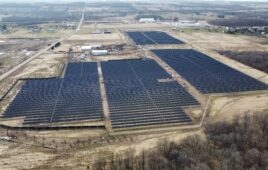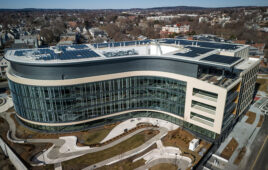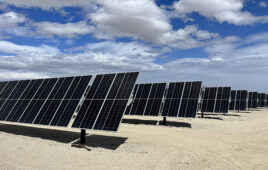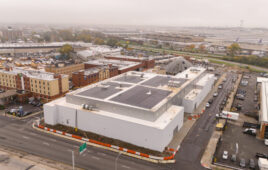The Public Utilities Commission of Nevada (PUCN) approved NV Energy‘s Integrated Resource Plan, which will bring an additional 1,190 MW of new PV solar energy projects and 590 MW of energy storage capacity to Nevada.
They are composed of projects that will be located in Southern Nevada and are expected to be completed and serving customers by January 1, 2024. With the addition of these new projects, NV Energy will also meet the commitment made to customers last year to double its renewable energy.
“Today’s decision brings the environmental and price benefits of low-cost solar energy to our customers, and the addition of energy storage capabilities allows us to extend the benefits of renewable energy to times when the sun is not shining,” said Doug Cannon, president and CEO of NV Energy. “We are proud to be delivering a renewable energy vision to our customers that also supports Nevada’s economic and sustainability goals.”
The three new projects are:
Arrow Canyon Solar Project: 200-MW PV solar project with a 75-MW, five-hour battery storage system. The project will be located in Clark County, Nevada, 20 miles northeast of Las Vegas on the Moapa Band of Paiutes Indian Reservation. It is being developed by EDF Renewables North America, an independent power producer and service provider with over 30 experience in renewable energy. EDF Renewables’ North American portfolio consists of 16 GW of developed projects and 10 GW under service contracts.
Southern Bighorn Solar & Storage Center: 300 MW solar array that includes a 135 MW, four-hour lithium-ion battery energy storage system. The project will be built in Clark County, Nevada on the Moapa River Indian Reservation about 30 miles north of Las Vegas. It is being developed by 8minute Solar Energy, an independent solar PV and storage project developer, with over 15 GW of solar and storage under development in California, the Southwest, Texas and the Southeast, and more than 2 GW of solar power plants now in operation.
Gemini Solar+Battery Storage Project: 690-MW PV solar array coupled with a 380-MWac battery storage system. The project will be located in Clark County, Nevada, 25 miles northeast of Las Vegas, on approximately 7,100 acres of federally-owned land under the management of the Bureau of Land Management. It is being developed by Quinbrook Infrastructure Partners in collaboration with Arevia Power, who are managing the development phases of the project. Quinbrook is a specialist investment manager focused exclusively on lower carbon and renewable energy infrastructure investment and operational asset management.
In April, Senate Bill 358 was signed into law by Governor Steve Sisolak requiring Nevada energy providers to achieve a 50% renewable energy portfolio standard by 2030.
The three new solar energy projects and three related energy storage resources will create more than 3,000 jobs during the construction period using union labor. This will ensure the highest quality construction is used in delivering these projects so they can serve Nevada’s energy needs for the long term.
NV Energy signed its first renewable PPA in the 1980s. The company exceeded Nevada’s current renewable energy requirement for the ninth straight year in 2018.
The newly approved projects will be added to NV Energy’s current portfolio of 57 geothermal, solar, hydro, wind, biomass and supported rooftop solar projects both in service and under development.
News item from NV Energy





After the NV Energy backed campaign on the ballot measure referred to as ‘Question 3’ which would have created another level to the “regulated monopoly” NV Energy already enjoys. Question 3 was voted down by the people and now, NV Energy is hot for more solar PV and energy storage. NV Energy couldn’t get limitations on alternative energy in the State. Now they will have to actually purchase and install their own solar PV , wind generation and energy storage if they are still going to (control) the energy market in Nevada.
I believe California has shown Nevada the folly of their ways. California is pushing 100% RE by 2045. For the past few years CAISO has been running the California grid by “curtailing” non-fueled generation like solar PV and wind generation when over generation “creates the duck curve”. CAISO thinks its proper to curtail a non-fueled generation resource and sign spot market contracts often with fueled generation facilities in other States to “ramp” around grid demands. Nevada has to see how insane this is, to throw away generation capacity from non-fueled generation and rely on much more expensive imported fueled generation, to be able to ‘also’ throttle the generation plant to address grid demands. All of this when storing the non-fueled over generation in a very large energy storage facility to shift and use the already generated power for later demands on the grid.